+ Q&A with Kate Winslet hosted by broadcaster Anna Smith.
Elizabeth ‘Lee’ Miller, born in 1907 in Poughkeepsie, New York was, as Kate Winslet explains, ‘An unstoppable force of nature with a tremendous lust for life.’
She became a model for Vogue and Vanity Fair magazines before moving to Paris to study photography with Man Ray. She set up her own photographic studios in Paris and New York before relocating to Cairo. It was then a chance meeting with Roland Penrose that led her to move to London at the outbreak of WWII. Miller overcame challenges and travelled to Europe to report for British Vogue from the frontline. Her surrealist images, along with her pack shots, portraits and extraordinary WWII photographs rightly earned her a key place in history as one of the most fascinating figures of 20th Century photography.
It was the chance discovery of Lee Miller that was the catalyst for Kate Winslet to begin the journey of the film. As she explains, ‘eight years ago a really good friend of mine who lives in Cornwall and works as a researcher for an auction house, phoned me and said, “there’s an amazing table in an auction that’s coming up and you just have to get it, it’s incredible.” I love cooking and hosting big meals, I love old tables, so I bought it.’ The table, it turns out, was owned by Annie Penrose, the sister-in-law of Roland Penrose, Lee Miller’s husband. It had been the centerpiece to the house where Lee Miller had spent time with the likes of Max Ernst, Paul Éluard, Man Ray, Picasso and Roland Penrose. During those hedonistic summers of love these artists would prepare meals, eat, discuss ideas and create at this table and acquiring it set Winslet on her own creative journey.
Uncovering more about Lee posed a burning question for Winslet, ‘why had no one made a film about her?’ Winslet was keen to find out more and answer that question. When she contacted Tony Penrose, Lee Miller and Roland Penrose’s son, he told her, ‘many people have tried to make films about Lee, we have a whole box of screenplays in the attic that have never been made.’ When asked by Winslet why that was, Tony replied, ‘they just didn’t quite get her.’
Working closely with Penrose, Winslet began the lengthy creative process of finding a way into Miller’s extraordinary life. Using his book, The Lives of Lee Miller as a starting point, Winslet set about considering the structure for the screenplay. ‘Getting the script right was the biggest challenge’ says Winslet, ‘we kept asking ourselves, how do we stop this being a biopic? It would have been impossible to tell the cradle-to-grave story of Lee Miller because she lived so many lives.’
The film wisely did not set out to be a biopic as Penrose explains, ‘what the producers have done is to select the most salient moments of Lee’s life that present her personality.’ As producer Kate Solomon says, ‘it’s not about the drama of Lee’s life, but rather, it’s about her inner life, how she felt and what drove her forward. It’s a story about a woman, a human being with a heart and a soul, and how the horrors of war affected her.’
For Winslet, focussing the screenplay on a particular decade of Miller’s life was a way ‘to get rid of all the preconceived ideas about Lee Miller as the model and the subject of many male artists’ gaze.’ The team wanted to tell the absolute truth of Lee and who she became and that truth as Winslet shares, ‘revealed itself when she worked for British Vogue as a war correspondent on the frontline during World War II. That’s the part of her story we focus on.’
Solomon explains, ‘it was about finding the period in her life that tells the crux of what she is about and, for Lee, that period is the ten years which take her from the pre-war sunlit days of the south of France where she spent time with her artistic friends, through to the heart of darkness of Dachau.’ The challenge was working out how in the script they could move from all of these varied moments of her life and the transition between them. Employing the device of having a young man, played by Josh O’Connor, interview Miller about her life, enabled the team to shape the screenplay’s narrative as Penrose explains, ‘having Lee, in the later stages of her life, be interviewed about her photographs allows us into her inner world and gave us a very smooth way to move from one event to the next.’ Winslet agrees, ‘when that element came into play, it began to feel like the movie we were hoping to make.’
Discovering what drove Miller, unveiled to Winslet what an utterly unstoppable woman she was and how relevant her story is today, ‘she was a life force to be reckoned with, so much more than an object of attention from famous men with whom she is associated. This woman was a photographer, writer, and reporter. She did everything with love, lust, and courage. She is an inspiration for what you can achieve, what you can bear, and what you can do if you dare to take life firmly by the hands and live it at full throttle.’
With pre-production revving up, Winslet began to consider taking on the role as she says, ‘Lee Miller was a truth-seeker and a truth-teller, at an enormous emotional and personal cost to herself, that was the thing that drove her and that was the reason she wanted to tell the truth of the atrocities of the Nazi regime. She was a woman who was so intrinsically true to who she was.’ It was these qualities that attracted Winslet to play Miller and drove her to tell her story as she explains, ‘I’m so taken by her, how she lived, how she was free with her body, with her affection, with her opinions about things, with telling the truth, speaking the truth and teaching other people how to do that. It’s everything I live for, and yet Lee Miller was doing it years ago and way better than everybody and certainly better than me. To be playing someone who I truly admire, adore, look up to, and aspire to be even a little bit like, it’s the most enormous privilege.’
Spending a lot of time with Winslet during the pre-production period, Penrose discovered that the similarities between the two women extended far beyond aesthetics as he explains, ‘talking to Kate, little things often came filtering into our conversation that were just what Lee would have said and Kate asked the questions Lee would have asked. There’s an immersive quality in Kate that was there in Lee. If Lee wanted to find out how to cook a new dish, she would go into the most incredible detail to learn how and by the end of it, she would have known as much as the master chef. That’s exactly the kind of attitude that Kate has towards Lee and this movie.’
Miller lived so many lives, reinventing herself in a desire to be free, to know more, learn more, and be more. As she famously said, ‘I’d rather take a picture than be one.’ She was an incredible woman, it is therefore no surprise that Winslet discovered her story and became the one to bring it to light.
Production notes
LEE
©: Brouhaha Lee Limited
A Sky Original film
A Brouhaha Entertainment and Juggle Films production in association with 55 Films and Vogue Studios
Presented by: MS Participations, Sky, Rocket Science, HMP Productions
In association with: Pasaca Entertainment
Directed by: Ellen Kuras
Executive Producers: Julia Stuart, Laura Grange, Finola Dwyer, Thorsten Schumacher, Billy Mulligan, Jason Duan, Crystine Zhang, Lem Dobbs, Liz Hannah, John Collee, Clare Hardwick
Produced by: Kate Solomon, Kate Winslet, Troy Lum, Andrew Mason, Marie Savare, Lauren Hantz
Associate Producer: Marion Hume
Co-producer: David Minkowski
Unit Production Manager: Louis Lewarne
Line Producer: Ferenc Szále
Production Manager: Ákos Hoboth
Location Managers: András Farkas, Gergő Gálbory, Attila Ponczók
Post-production Supervisor: Portia Napier
1st Assistant Director: Richard Styles
Script Supervisor: Tessa Kimbell
Casting Directors: Lucy Bevan, Olivia Grant
Written by: Liz Hannah, Lem Dobbs, John Collee, Marion Hume
Based on The Lives of Lee Miller by: Antony Penrose Factual Consultant: Antony Penrose
Production Consultant: Richard Whelan
Director of Photography: Pawel Edelman
A Camera/Steadicam Operator: Marcus Pohlus
A Camera Operator: Csaba Szentgáli
Visual Effects Supervisor: Glen McGuigan
Visual Effects by: Jellyfish Pictures
Special Effects Supervisor: Endre Korda
Editor: Mikkel E.G. Nielsen
Production Designer: Gemma Jackson
Supervising Art Director: Adam Squires
Art Directors: Bence Erdélyi, Zoltán Sárdi
Set Decorators: Lotty Sanna, Zsuzsa Mihalek
Titles Designed by: Matt Curtis
Costume Designer: Michael O’Connor
Costume Supervisors: Kat Willis,Krisztina Vavrinecz
Hair & Make-up Designer: Ivana Primorac
Prosthetics: John Nolan Studio
Music Composed & Conducted by: Alexandre Desplat
Music Supervisor: James A. Taylor
Score Producer & Assistant Conductor: Dominique Solrey Lemonnier
Orchestrations: Alexandre Desplat, Jean-Pascal Beintus
Score Recorded by/Score Mixed by: Peter Cobbin, Kirsty Whalley
Music Editor: Peter Clarke
Production Sound Mixer: Csaba Major
Supervising Sound Editor/Sound Designer: Jimmy Boyle
Re-recording Mixers: Mike Prestwood Smith, Candela Palencia
Stunt Coordinator: László Kósa
Cast
Kate Winslet (Lee Miller)
Andy Samberg (David E. Scherman, ‘Davy’)
Alexander Skarsgård (Roland Penrose)
Marion Cotillard (Solange de Noailles, Duchesse d’Ayen)
Andrea Riseborough (Audrey Withers)
Noémie Merlant (Nusch Éluard)
Josh O’Connor (Antony Penrose, ‘Tony’)
James Murray (Colonel Spencer)
Arinzé Kene (Major Jonesy)
Vincent Colombe (Paul Éluard)
Patrick Mille (Jean D’Ayen)
Camilla Aiko (Maud)
Samuel Barnett (Cecil Beaton)
Zita Hanrot (Ady Fidelin)
Seán Duggan (Man Ray)
Enrique Arce (Pablo Picasso)
Marinko Prga (Von Aulock)
Orlando Seale (Officer Martin)
Harriet Leitch (Ann Douglas)
Claire Lavernhe (blonde French collaborator)
Caroline Lena Olsson (Breton woman)
Vanesa Glodjo (collaborator neighbour)
Ena Kurtalić (French woman with rose)
Toni Gojanovic (jaded soldier)
Tom Panay (young soldier in cellar)
Ian Dunnett Jr (Raymond Hollman, PR Officer Normandy)
Riley Neldam (Kurt, burned soldier)
Patrick McCullough (surgeon)
Katalin Ruzsik (nurse)
Joe Anders (Frank Kleeman, American GI)
Anita Major (desperate girl)
Sanchia McCormack (fisherwoman)
Botond Bartus (comms man)
Dávid Fecske (spotter)
Lotti Kővári (searchlight operator)
Ágnes Fekete (bread woman)
Jazmin Elizabeth Brenner (young girl in Dachau)
UK/Australia/USA/Norway/Ireland 2023
116 mins
Digital
Courtesy of Sky Cinema
SIGHT AND SOUND
Never miss an issue with Sight and Sound, the BFI’s internationally renowned film magazine. Subscribe from just £25*
*Price based on a 6-month print subscription (UK only). More info: sightandsoundsubs.bfi.org.uk

BFI SOUTHBANK
Welcome to the home of great film and TV, with three cinemas and a studio, a world-class library, regular exhibitions and a pioneering Mediatheque with 1000s of free titles for you to explore. Browse special-edition merchandise in the BFI Shop.We're also pleased to offer you a unique new space, the BFI Riverfront – with unrivalled riverside views of Waterloo Bridge and beyond, a delicious seasonal menu, plus a stylish balcony bar for cocktails or special events. Come and enjoy a pre-cinema dinner or a drink on the balcony as the sun goes down.
BECOME A BFI MEMBER
Enjoy a great package of film benefits including priority booking at BFI Southbank and BFI Festivals. Join today at bfi.org.uk/join
BFI PLAYER
We are always open online on BFI Player where you can watch the best new, cult & classic cinema on demand. Showcasing hand-picked landmark British and independent titles, films are available to watch in three distinct ways: Subscription, Rentals & Free to view.
See something different today on player.bfi.org.uk
Join the BFI mailing list for regular programme updates. Not yet registered? Create a new account at www.bfi.org.uk/signup
Programme notes and credits compiled by Sight and Sound and the BFI Documentation Unit
Notes may be edited or abridged
Questions/comments? Contact the Programme Notes team by email

